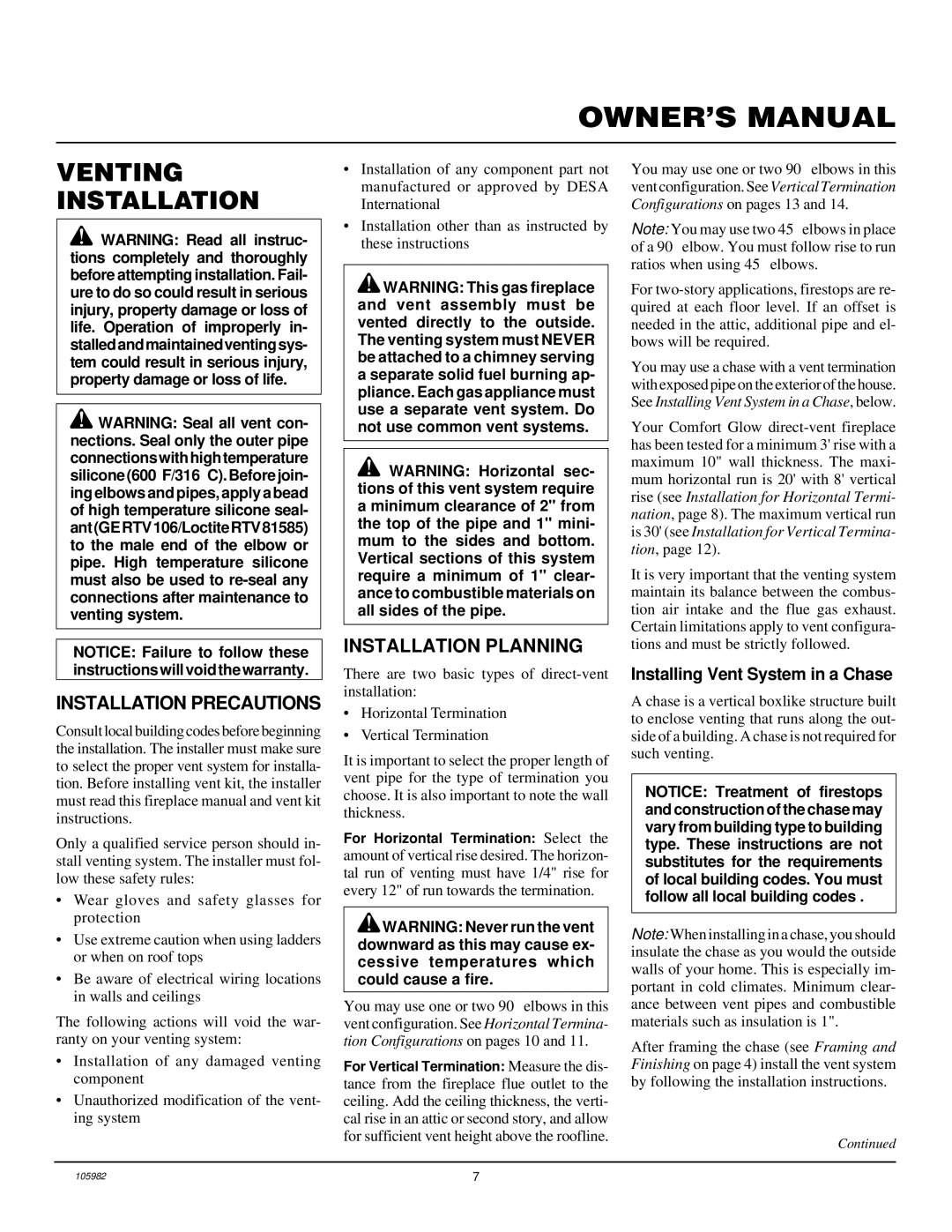CDV34PA, CDV34NA specifications
Desa CDV34NA and CDV34PA are two prominent models in the Desa vent-free gas fireplace series, renowned for their efficiency, craftsmanship, and modern design. These fireplaces offer an ambient warmth while combining style with practicality, making them a popular choice for homeowners looking to enhance their living spaces.One of the key features of the CDV34NA and CDV34PA is the vent-free technology. This innovative design allows for the direct burning of gas without the necessity of a chimney or venting system. As a result, these fireplaces can be installed in various locations within the home, providing flexibility that traditional fireplaces cannot match. The absence of a flue system also means that no heat is lost during the exhaust process, allowing for maximum energy efficiency.
Both models are equipped with advanced safety features. They include an Oxygen Depletion Sensor (ODS) that automatically shuts off the unit if oxygen levels fall below a safe threshold. This technology not only ensures the safety of users but also enhances peace of mind while operating the fireplace. Additionally, the CDV34 series features a built-in thermocouple that regulates the temperature, providing an added layer of safety by preventing overheating.
When it comes to aesthetics, the CDV34NA and CDV34PA do not disappoint. They feature a modern, sleek design that complements a variety of interior decors. Available in stylish finishes, these units can seamlessly blend into contemporary homes or traditional settings. The large viewing windows provide a captivating view of the flames, creating an inviting ambiance ideal for any gathering.
Performance-wise, both models deliver impressive heating capabilities. With adjustable heat output settings, users can customize the warmth to suit their preferences. The units operate quietly, enhancing the overall comfort of the environment without disruptive fan noise. Additionally, the CDV34NA model runs on natural gas, while the CDV34PA uses propane, providing options based on the homeowner's available gas supply.
In conclusion, the Desa CDV34NA and CDV34PA are exceptional options for those seeking a versatile and stylish heating solution. With their vent-free technology, enhanced safety features, and elegant design, these fireplaces are perfect for adding warmth and character to any indoor space. Whether for new constructions or renovations, these models offer the right blend of function and form for today's discerning homeowners.

